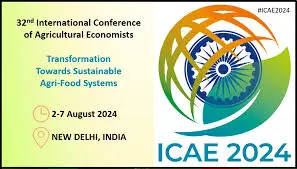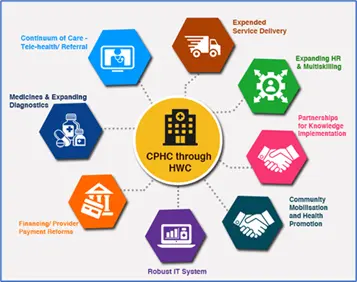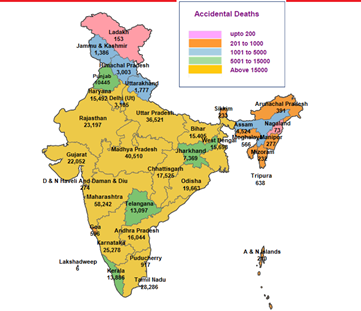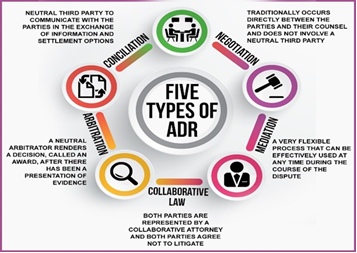Wednesday, 7th August 2024
A Chance to Cement India-Africa Partnership in Food Security
Why in the news?
- India is hosting the 32nd International Conference of Agricultural Economists (ICAE) from August 2-7, 2024, in Delhi.
- This event marks a significant milestone, reflecting India’s enduring commitment to agricultural economics and food security.
- It also serves as a platform to strengthen India-Africa partnerships in food security, enabling mutual learning to enhance nutrition for children under five.

Historical Significance:
- The ICAE’s history is closely linked with India, having last been hosted in Mysore in 1958, with Jawaharlal Nehru, then Prime Minister, as the chief guest.
- The conference's origins trace back to 1921 when Rabindranath Tagore invited British agronomist Lord L.K. Elmhirst to address issues faced by villages around Santiniketan.
- This initiative aimed to create a rural development model for India.
- Elmhirst, inspired by Tagore and supported by Dorothy Straight, collaborated with Tagore, laying the foundation for ICAE.
- Tagore's approach combined scientific agricultural practices with cultural and educational elements.
Contemporary Role:
- Platform for Knowledge Exchange and Collaboration:
- ICAE provides a crucial platform for agricultural economists, policymakers, researchers, and practitioners to exchange knowledge and collaborate on solutions for global agricultural challenges.
- The conference facilitates the sharing of research, best practices, and policy insights for sustainable agricultural development.
- Addressing Global Food Security and Nutrition Issues:
- ICAE focuses on strategies to ensure food security and improve nutrition, particularly in vulnerable regions, amid challenges like climate change that impact agricultural productivity.
- Climate Change and Agricultural Sustainability:
- The conference addresses sustainable agricultural practices to mitigate climate change impacts, including adapting agricultural systems, reducing greenhouse gas emissions, and enhancing resilience through innovative techniques and sustainable land use.
- Economic Development and Poverty Reduction:
- ICAE explores how agricultural investments drive economic growth, create jobs, and reduce poverty, particularly in developing countries, emphasising agriculture’s role in enhancing economic stability.
- Public Policy and Agricultural Economics:
- ICAE provides a forum for discussing policy interventions supporting agricultural development, such as subsidies and rural development programs, ensuring policies are based on sound economic principles and evidence.
- Technological Advancements and Innovation:
- The conference highlights how technological innovations, such as precision farming and digital agriculture, can enhance productivity, reduce environmental impacts, and improve food security, encouraging the adoption of cutting-edge technologies.
Purpose of ICAE’s Special Session: A Comparative Study of India and Africa
- High Debt Service Ratios:
- Both India and Africa face high debt service ratios, limiting agricultural spending relative to social protection.
- Underfunding Agriculture:
- African countries underfund agriculture compared to Indian states, affecting productivity and efforts to combat child malnutrition.
- Need for Investment in R&D:
- Enhancing public spending on agricultural research and development (R&D) and extension services is crucial due to high returns on investment.
- Reform and Reallocation:
- The study suggests reforming subsidies and reallocating resources towards infrastructure and R&D to boost agricultural growth and improve child nutrition outcomes.
Global Perspective on Hunger and Food Security
- Challenges in Ending Hunger:
- Global hunger remains a challenge due to conflicts, climate crisis, and economic slowdowns, making the UN’s goal of zero hunger by 2030 increasingly difficult.
- Investment Needs:
- An additional $21 billion annually in agriculture and rural investments is needed to end global hunger by 2040, according to a study by the University of Bonn and FAO.
- Global Leadership:
- India’s G20 leadership and Brazil’s presidency have impacted the global food security agenda.
- The presentation of a bioeconomy strategy at the G20 and China’s bioeconomy strategy highlight the need for global collaboration.
Way Ahead: South-South Collaboration:
- Importance of Collaboration:
- South-South collaboration is essential for addressing food and nutritional security challenges.
- G20 developed countries can support climate resilience and share innovations for food system transformation.
- Investment and Transformation:
- South Asia and Africa, home to nearly 3 billion people, should advocate for increased investment in climate resilience and system transformation.
- The G20 presidency sequence (2022-2025) reflects a shift in food system governance.
Conclusion:
The 32nd ICAE in Delhi underscores the importance of global collaboration in agricultural economics. This event presents an opportunity to advance food security agendas and strengthen agri-food relations between Africa and India, potentially benefiting nearly one-third of humanity and promoting a sustainable and resilient future.
Source: IE
Govt to restore indexation benefit for property
Why in the news?
- Following criticism over the Budget proposal to remove the indexation benefit on long-term capital gains (LTCG) from selling unlisted assets, the government has decided to offer taxpayers a choice.
- For properties acquired before July 23, 2024, taxpayers can either pay LTCG tax at 20% with the indexation benefit or pay LTCG tax at the new rate of 12.5% without the indexation benefit.
- This change comes from amendments made by the government in the Finance Bill.

Capital Gain Tax:
- About:
- Definition: A tax imposed on the sale of an asset, calculated as the difference between the sale price and the purchase price of the property.
- Applicability: Gains or losses from the sale of house property and other capital assets like stocks, mutual funds, bonds, and investments.
- Types:
- Short-term Capital Gains: Gains from assets held for a shorter period.
- Long-term Capital Gains: Gains from assets held for a longer period.
- Budget 2024 and Capital Gain Tax:
- Holding Periods: Only two holding periods now – 12 months and 24 months. The 36-month period has been removed.
- Long-Term Assets: Listed securities with a holding period exceeding 12 months are considered long-term. For other assets, the period is 24 months.
- Tax Rates:
- Short-term capital gains on listed equity shares, equity-oriented funds, and business trusts increased to 20% from 15%.
- Short-term gains on other assets taxed at slab rates.
- Exemption limit for long-term capital gains on equity shares, equity-oriented units, and business trusts increased to Rs 1.25 lakh per year. Tax rate increased from 10% to 12.5%.
- Long-term capital gains on other assets reduced from 20% to 12.5%.
Indexation Benefits:
- About:
- Purpose: Adjusts the purchase price of a property according to the prevailing inflation rate to reduce taxable capital gains.
- Mechanism: Inflates the purchase price based on inflation over the invested years, ensuring taxes are paid only on real gains after inflation adjustment.
- Calculation:
- CII (Cost Inflation Index): Government-released numbers that take into account the prevailing inflation for the financial year.
- Formula: Indexed cost = Purchase Amount * (CII in year of sale / CII in year of purchase).
- Base Year: Initially set as 1981, later shifted to 2001 with a base value of 100.
- Possible Impact of Removal of Indexation Benefit:
- Resale Market Slowdown: Owners of older properties may be discouraged from selling due to increased tax liability.
- Rise in Cash Transactions: Potential increase in under-the-table deals to avoid higher taxes, counteracting efforts to formalise the real estate sector.
- Higher Property Prices: Sellers may raise prices to offset the tax burden, passing the cost to buyers.
Govt to Restore Indexation Benefit for Property:
- Background:
- Budget 2024 Announcement: Proposed removal of indexation benefits, introducing a 12.5% LTCG tax rate without indexation.
- Post-23rd July 2024 Sales: Initially, any long-term asset sale after this date would attract the new 12.5% tax rate without indexation.
- Revised Decision:
- Amendment: Government amended the Finance Bill, 2024, allowing taxpayers to choose between:
- 12.5% LTCG tax rate without indexation.
- 20% LTCG tax rate with indexation for properties acquired before July 23, 2024.
- Grandfathering Clause: Initially, there was no provision for properties bought after April 1, 2001.
- Amendment: Government amended the Finance Bill, 2024, allowing taxpayers to choose between:
Source: IE
Draft Broadcasting Services (Regulation) Bill 2024
Why in the news?
- The latest draft of the Broadcasting Services (Regulation) Bill 2024 seeks to replace the Cable Television Networks (Regulation) Act 1995.
- The draft Bill aims to regulate the broadcast of news and current affairs programs (excluding print news), requiring compliance with prescribed program and advertisement codes.

About the Draft Broadcasting Services (Regulation) Bill 2024:
- Background:
- The draft is a revision of the 2023 release by the Ministry of Information and Broadcasting, aiming to consolidate the legal framework for the broadcasting sector and extend it to over-the-top (OTT) content and digital news.
- Key Features:
- Definition of Digital News Broadcasters:
- Includes publishers of news and current affairs content through online papers, news portals, websites, social media intermediaries, etc., as part of a systematic business, professional, or commercial activity. Replica e-papers are excluded.
- Code of Ethics:
- Seeks to validate the code of ethics prescribed under the IT (Intermediary Guidelines and Digital Media Ethics Code) Rules 2021, which has been stayed by the Bombay and Madras High Courts.
- Content Evaluation Committee (CEC):
- A committee to evaluate content and certify compliance with the code.
- Introduces a 3-tier regulation structure for content creators, requiring them to constitute CECs, register with a Self-Regulatory Organisation, and adhere to orders from the Centre-appointed Broadcast Advisory Council.
- Non-compliance by news creators (failing to intimate the Central government about their CEC members) will result in fines: Rs 50 lakh for the first contravention, and Rs 2.5 crore for subsequent violations within three years.
- Definition of Digital News Broadcasters:
Position of the OTT Platforms under the Latest Draft:
- The Centre aims to regulate OTT platforms under this new bill, alongside user-generated content.
- The revised draft no longer includes streaming platforms in the definition of 'internet broadcasting services'.
- OTT platforms are now referred to as 'publishers of online curated content', aligning with IT Rules 2021.
- Content broadcast on these platforms excludes news and current affairs programs.
Expansion of the Draft Broadcasting Services (Regulation) Bill 2024:
- Sensational News during the 2024 Lok Sabha Polls:
- Independent content creators made sensational claims about the government and its leaders, highlighting the need for accountability and a level-playing field between mainstream press and independent creators.
- Content Amplification by Big-Tech Companies:
- Concerns about algorithm-driven content amplification by tech companies, which may skew narratives.
- Companies argue that their algorithms serve content based on user browsing history.
Concerns Regarding the Draft Broadcasting Services (Regulation) Bill 2024:
- Chilling Effect on Freedom of Speech and Expression:
- The draft raises questions about the freedom of speech and the government's regulatory powers, including broad definitions of digital news broadcasters and the requirement for prior registration and content evaluation standards.
- Exemption of Certain Stakeholders:
- The government may exempt specific stakeholders from the Bill's provisions, raising concerns about unequal treatment.
Conclusion:
The Draft Broadcasting Services (Regulation) Bill 2024 aims to modernise and regulate the broadcasting sector comprehensively. However, it also brings forth significant concerns regarding freedom of speech, regulatory overreach, and potential exemptions, necessitating careful consideration and debate.
|
UPSC Civil Services Examination, Previous Year Question (PYQ) Prelims: Q:1 In India, it is legally mandatory for which of the following to report on cyber security incidents? (2017)
Select the correct answer using the code given below:
Ans: D
Mains: Q:1 Data security has assumed significant importance in the digitised world due to rising cybercrimes. The Justice B.N. Srikrishna Committee Report addresses issues related to data security. What, in your view, are the strengths and weaknesses of the Report relating to the protection of personal data in cyberspace? (2018) |
Source: IE
Govt spent 14% funds under Ayushman on those over 70 yrs
Why in the news?
- Beneficiaries aged 70 years and above constituted over 12% of all admissions under the government’s flagship Ayushman Bharat health insurance scheme, as reported by the Union Ministry of Health and Family Welfare in Parliament.

What is the Ayushman Bharat Scheme?
- About:
- Launched: 2018, following the National Health Policy 2017 recommendations.
- Objective: To achieve Universal Health Coverage, aligning with Sustainable Development Goal 3, which commits to "leave no one behind."
- Components:
- Pradhan Mantri Jan Arogya Yojana (PM-JAY):
- Coverage: Provides health insurance cover of Rs. 5 lakhs per year.
- Beneficiaries: Over 10 crore poor and vulnerable families.
- Scope: Secondary and tertiary care.
- Health and Wellness Centres (HWCs):
- Goal: Transform 1,50,000 Sub Centres and Primary Health Centres.
- Purpose: Provide quality healthcare closer to the community.
- Features: Free essential medicines, diagnostic services, teleconsultation, and health promotion activities like Yoga.
- Screening: Annual screening for individuals aged 30 years and older for Non-Communicable Diseases (NCDs) such as hypertension, diabetes, and cancers (oral, breast, cervical).
- Pradhan Mantri Jan Arogya Yojana (PM-JAY):
Ayushman Bharat Health and Wellness Centres (HWCs):

- Purpose:
- Access to Quality Healthcare: Ensuring healthcare closer to the community to improve health outcomes and reduce out-of-pocket expenditures.
- Features:
- Free Services: Essential medicines, diagnostic services, teleconsultation.
- Health Promotion: Wellness activities, including Yoga.
- Annual Screening: For Non-Communicable Diseases (NCDs) like hypertension, diabetes, and cancers (oral, breast, cervical) for those 30 years and older.
- Progress/Achievements:
- Milestone: Over 30 crore Ayushman cards issued by January 2024.
- Ayushman App: Launched for Ayushman Card creation.
- State Rankings: Uttar Pradesh leads with 4.83 crore Ayushman Cards, followed by Madhya Pradesh (3.78 crore) and Maharashtra (2.39 crore).
- Gender Equity: 48% of treatments availed by females.
- Hospital Admissions: 6.2 crore admissions worth over Rs. 79,000 crores.
Performance:
- Elderly Beneficiaries:
- Constituted over 12% of all admissions.
- Accounted for nearly 14% of total expenditure till January 2024.
- 57.5 lakh admissions for senior citizens aged 70 and above.
- Treatment costs for the elderly amounted to more than Rs. 9,800 crore out of the total Rs. 79,200 crore spent over six years.
- Future Expansion:
- The government plans to include all individuals over 70, irrespective of economic status, adding nearly 4 crore new beneficiaries.
- Expected to increase policy utilisation and costs.
- The interim budget in February extended the scheme to ASHA and Anganwadi workers. A slight increase in allocation to Rs. 7,300 crore in the July budget.
- Demographic Projections:
- India's ageing population is projected to rise from 8.6% in 2011 to 19.5% by 2050.
- The absolute number of elderly will triple from 103 million in 2011 to 319 million by 2050.
- State-wise Data:
- Maharashtra: Leading in hospital admissions for the elderly at 20.49%.
- Tamil Nadu: Lowest proportion of admissions at 3.12%, but higher treatment costs for the elderly.
- Other States: Kerala, Haryana, Himachal Pradesh, Bihar, among others, have high proportions of spending on elderly care.
- Cost of Elderly Treatments:
- Higher due to longer healing times, increased likelihood of secondary infections, need for ICU care, and multiple comorbidities.
|
UPSC Civil Services Examination, Previous Year Question (PYQ) Prelims: Q:1 In India, it is legally mandatory for which of the following to report on cyber security incidents? (2017)
Select the correct answer using the code given below:
Ans: D
Mains: Q.Data security has assumed significant importance in the digitized world due to rising cybercrimes. The Justice B.N. Srikrishna Committee Report addresses issues related to data security. What, in your view, are the strengths and weaknesses of the Report relating to the protection of personal data in cyberspace? (2018) |
Source: IE
The debate over GST on health insurance
Why in the news?
- With an 18% Goods and Services Tax (GST) added, many people in India are finding insurance less affordable.
- Opposition leaders protested in Parliament, demanding the removal of GST on these premiums.
- Union Minister Nitin Gadkari also wrote to the finance minister, arguing that GST on insurance premiums taxes life's uncertainties and hampers industry growth.

Life and Health Insurance Market in India:
- Fiscal 2023-24 Data:
- General insurance industry collected ₹1,09,000 crore in health premiums.
- Life insurance companies collected ₹3,77,960 crore, with LIC alone contributing ₹2,22,522 crore.
- State-wise Contribution: Five states—Maharashtra, Karnataka, Tamil Nadu, Gujarat, and Delhi—accounted for 64% of the total health insurance premium in 2022-23.
- Insurance Penetration:
- Life insurance sector penetration decreased from 3.2% in 2021-22 to 3% in 2022-23.
- Non-life insurance penetration remained at 1%.
- Overall, India's insurance penetration dropped to 4% in 2022-23 from 4.2% in the previous year.
GST on Health and Life Insurance Premiums
- Introduction of GST:
- Introduced on July 1, 2017, replacing all indirect taxes, including service tax and cess.
- Currently, GST on health and life insurance policies is fixed at 18%.
- Pre-GST Taxation:
- Life insurance premiums were subject to 15% service taxes (Basic Service Tax, Swachh Bharat cess, and Krishi Kalyan cess).
- Impact on Premiums:
- The introduction of GST increased premium amounts.
- High medical inflation, estimated at 14% last year, has made medical and term insurance less affordable.
- Government Acknowledgement: Requests for an exemption or reduction in GST rates on life and health insurance have been received.
Rationale Behind Imposing GST on Health and Life Insurance Premiums:
- Role of GST Council:
- GST rates and exemptions on services, including health insurance premiums, are set by the GST Council, comprising the Union Finance Minister and state/UT ministers.
- Revenue Generation:
- GST is applicable to all insurance policies since insurance is considered a service.
- The insurance sector contributed ₹21,256 crore in GST during the last three financial years, with another ₹3,274 crore from the reissuance of health policies.
- Tax Deductions:
- Insurance premiums are eligible for tax deductions under Sections 80C and 80D of the Income Tax Act, 1961.
- Deductions up to ₹1.5 lakh, including GST, and additional deductions for medical riders are allowed.
Need for Withdrawing the GST on the Premium
- Increased Premiums:
- The main issue is the significant increase in premiums on health insurance policies this year, with a leading public sector insurer hiking premiums by 50%.
- High GST Rates:
- Experts point out that GST on insurance in India is the highest in the world.
- This could challenge the Insurance Regulatory and Development Authority of India's (IRDAI) goal of “Insurance for All by 2047”.
- Standing Committee on Finance Report:
- The Standing Committee on Finance, in its 66th report submitted to Parliament in February 2024, recommended rationalising the GST rate on insurance products, especially health and term insurance.
- The high GST rate results in a high premium burden, acting as a deterrent to obtaining insurance policies.
Source: IE
VIRAASAT
Why in the news?
- Recently, VIRAASAT,” a fortnight-long exhibition celebrating the 10th National Handloom Day, commenced at Handloom Haat in Janpath.

About VIRAASAT:
- Organisers:
- Organised by the National Handloom Development Corporation Ltd (NHDC) under the Ministry of Textiles.
- Event Series:
- The series “VIRAASAT”- the “Exclusive Handloom Expo” continues the celebrations held the previous year around National Handloom Day.
- Focus:
- Highlights the glorious tradition of handloom and handicrafts.
- Provides a market connection to handloom weavers and artisans.
- Exhibition Highlights:
- Features unique products such as Banarasi, Jamdani, Baluchari, Madhubani, Kosa, Ikkat, Patola, Tussar Silk, Maheshwari, Moirang Phee, Baluchari, Phulkari, Laheriya, Khandua, and Tangaliya.
Key Facts about the National Handloom Day:
- Historical Context:
- The Swadeshi Movement, launched on 7th August 1905, encouraged indigenous industries, particularly handloom weavers.
- Government Commemoration:
- Since 2015, the Government of India commemorates the 7th of August every year as National Handloom Day.
- First Celebration:
- The first National Handloom Day was celebrated on 7th August 2015 in Chennai.
- Objective:
- Aims to recognize the efforts and skills of the community of weavers engaged in this sector.
Source: PIB
Commemorative Stamps
Why in the news?
- Recently, the Department of Posts released a set of commemorative postage stamps to celebrate the Paris Olympics.

About Commemorative Stamps:
- Purpose:
- Commemorative stamps are issued to mark important events, prominent personalities in various fields, aspects of nature, rare flora and fauna, environmental issues, agricultural activities, national/international issues, and games.
- Availability:
- These stamps are available only at Philatelic Bureaux and counters or under the Philatelic Deposit Account Scheme.
- Production:
- They are printed in limited quantities.
Rules for Issuing Commemorative Postage Stamps:
- Proposal Submission:
- Proposals for issuing commemorative postage stamps can be sent by any citizen of India.
- Institution/Organization Criteria:
- Stamps are issued only on the apex institution/organisation during its 100th/125th/150th anniversary, not on the branches of any institution or organisation.
- The institution/organisation should have national or international stature with significant and well-recognized contributions in their respective fields.
- Personalities:
- No stamp will be issued on a living personality.
- The personalities commemorated should be of national or international importance.
- The occasion must be the birth centenary or 10th/25th/50th/100th death anniversary. Stamps can be issued no sooner than ten years after an individual’s death, with exceptions for personalities from the fields of Art, Culture, and Music.
- Buildings/Monuments:
- A stamp on a building or monument may be issued on its centenary/125th/150th anniversary.
- The building must be a heritage site of national/international importance, or a site recognized by the Archaeological Survey of India (ASI).
- Issuing Authority:
- These stamps are released by the Department of Posts, Ministry of Communications.
Source: PIB
Global Alliance for Improved Nutrition (GAIN)
Why in the news?
- A recent report by the Global Alliance for Improved Nutrition (GAIN) calls for nutrition investments in the agri-food sector, which it argues can reduce gender inequalities, increase productivity, and enhance business resilience.

About Global Alliance for Improved Nutrition (GAIN):
- Foundation and Purpose:
- GAIN is a Swiss-based foundation launched at the United Nations in 2002 to tackle the human suffering caused by malnutrition.
- Headquartered in Geneva, Switzerland, GAIN has offices in countries with high levels of malnutrition.
- Mission:
- GAIN works with governments, businesses, and civil society to make healthier food choices more affordable, more available, and more desirable.
- Its primary goal is to improve nutrition outcomes by enhancing the consumption of nutritious and safe food for all people, especially the most vulnerable.
- Activities and Partnerships:
- GAIN mobilises public-private partnerships and provides financial and technical support to deliver nutritious foods to those most at risk of malnutrition.
- The organisation supports improved maternal and infant health by promoting breastfeeding and specialised products for infants over six months and young children.
- It also partners with local businesses to improve the quality of food along agricultural value chains.
- Impact:
- GAIN-supported nutrition programs are reaching an estimated 667 million vulnerable people in more than 30 countries.
Source: DTE
Indian Siris
Why in the news?
- Recently, A pall of gloom descended on Kumaradevam gram panchayat, located in the East Godavari district, after the death of the century-old Indian Siris tree.

About Indian Siris:
- Scientific Name and Origin:
- Indian Siris, also known as Albizia lebbeck, is a tropical tree native to India and Southeast Asia.
- It belongs to the Fabaceae family and is a deciduous tree with a wide range of uses.
- Growth Requirements:
- They require a warm and humid climate and can be grown in a variety of soil types, including clay, loam, and sandy soil.
- Features:
- Indian Siris grows up to a maximum height of 15-20 meters and has a wide-spreading, umbrella-shaped canopy.
- The tree trunk is typically straight, with a diameter of up to 1 meter.
- Its leaves are green and fern-like, growing up to 25 cm long.
- It has a moderate to dense branching pattern, with branches that spread outwards and upwards from the trunk.
- The tree produces small, white, and fragrant flowers in clusters.
- Ecological Role:
- The tree is capable of fixing nitrogen from the atmosphere, which helps to enrich the soil and support other plant species.
- The extensive, shallow root system makes it a good soil binder, suited to soil conservation and erosion control.
Source: TH
India's Role in South Asia
Context:
- The evolving geopolitical landscape in South Asia demands that India adapt its approach towards its neighbours with prudence and pragmatism.
- The recent upheaval in Bangladesh, marked by the Prime Minister's resignation and the Army's interim governance, underscores regional volatility.
- India's commitment to regional peace, stability, and development will secure its strategic interests and contribute to regional harmony and prosperity.

Why India's Neighbourhood is Facing Continuous Political and Economic Turmoil?
- Military Interference in Civilian Governance
- Historical Interventions: Many countries in South Asia have a history of military coups and interventions, undermining democratic institutions.
- Pakistan: Has experienced direct military rule for nearly half its existence since independence.
- Myanmar: The 2021 military coup by the Tatmadaw led to widespread civil unrest.
- Bangladesh: The military intervened multiple times, notably in 2007-2008.
- Consequences: These interventions often lead to political instability, human rights violations, and economic disruptions.
- Economic Vulnerabilities and External Dependencies
- Sri Lanka: The 2022 economic crisis saw external debt reaching an all-time high.
- Bangladesh: Heavy reliance on the garment industry, accounting for 80% of its exports, makes it vulnerable to global demand fluctuations.
- Maldives: The tourism sector, contributing 28% to GDP, is susceptible to external shocks like the Covid-19 pandemic.
- Pakistan: With USD 130.6 billion in external debt by the end of 2022, and 30% owed to China, there are risks of economic leverage.
Geopolitical Competitions and External Influences:
- China's Influence:
- Investments through the China-Pakistan Economic Corridor (CPEC) have increased Beijing's influence in Pakistan.
- Sri Lanka's Hambantota Port was handed over to China on a 99-year lease due to debt issues.
- Nepal's infrastructure projects, like the Pokhara International Airport, show its balancing act between India and China.
- Climate Change and Environmental Challenges
- Maldives: Faces an existential threat from rising sea levels with 80% of its land less than 1 meter above sea level.
- Bangladesh: Could have 13.3 million internal climate migrants by 2050, according to the World Bank.
- Pakistan: 2022 catastrophic floods affected millions, causing substantial economic loss.
- Nepal: Glaciers retreating at 10-60 meters per year threaten water security.
- Legacy of Colonial Structures and Fragile Institutions
- Border Disputes: The Radcliffe Line of 1947 created numerous border issues, including the India-Pakistan conflict over Kashmir.
- Political Instability: Most South Asian countries are classified as "flawed democracy" or "hybrid regime" according to the Economist Intelligence Unit's Democracy Index 2020.
- Demographic Pressures and Socio-Economic Disparities
- Youth Populations:
- Pakistan: 64% under 30, creating job pressures and risks of extremism.
- High youth unemployment: 20.5% in Nepal (2022) and 24.74% in Sri Lanka.
- Youth Populations:
What are the Major Challenges India Faces in its Neighborhood ?
- Pakistan
- Tensions: Ongoing issues over Kashmir and cross-border terrorism.
- Economic Crisis: Political instability and negotiations with the IMF.
- China: Increasing influence through CPEC poses strategic challenges.
- Terrorism: Recent attacks in Jammu allegedly sponsored by Pakistan.
- Bangladesh
- Political Upheaval: Current Prime Minister’s resignation amid protests.
- Relations: Potential impact on the positive trajectory of India-Bangladesh relations.
- Migration: Concerns over illegal migration, particularly in Assam, with potential military rule exacerbating the issue.
- Nepal
- Political Instability: Frequent government changes affect policy consistency.
- China Relations: Growing economic ties with China, including Belt and Road Initiative projects.
- Border Disputes: Issues like the Kalapani dispute remain sources of tension.
- Sri Lanka
- Economic Recovery: India provides crucial economic assistance post-crisis.
- Bilateral Issues: Katchatheevu island and treatment of Tamil minorities.
- Debt Restructuring: India supports Sri Lanka's debt restructuring efforts with the IMF.
- Maldives
- Political Shift: Election of a Pro-China President and calls for reducing Indian military presence challenge India’s strategic interests.
- Myanmar
- Military Coup: The coup and subsequent unrest create complex challenges.
- Rohingya Crisis: Refugee influx into northeastern India and potential increased Chinese influence.
- Strategic Interests: Balancing counterinsurgency and connectivity projects with human rights concerns.
- Bhutan
- Diversification: Efforts to reduce economic dependence on India present new dynamics.
- Doklam Issue: Remains a strategic concern involving China.
- Development Partnership: India remains Bhutan's principal partner, but relations must evolve with Bhutan's aspirations.
- Afghanistan
- Taliban Rule: Return of Taliban has reshaped the geopolitical landscape.
- Humanitarian Assistance: India maintains relations through aid and hosting the cricket team.
- Investments at Risk: Significant investments in Afghanistan's development are at risk amidst waning strategic influence.
What Measures India Can Take to Enhance Relations with its Neighbours?
- Connectivity Catalyst: Bridging Borders, Building Bonds
- Accelerate Connectivity Initiatives: India should fast-track projects like the Bangladesh-Bhutan-India-Nepal (BBIN) Motor Vehicles Agreement and the India-Myanmar-Thailand Trilateral Highway.
- Establish More Integrated Check Posts (ICPs): Similar to successful ICPs with Nepal and Bangladesh, more such posts can facilitate smoother border crossings.
- Expand Digital Connectivity: Projects like the South Asian Satellite can enhance regional digital integration.
- Foster Regional Prosperity: These initiatives position India as a facilitator of regional growth, countering the narrative of regional hegemony.
- Economic Empowerment: From Aid to Trade
- Shift from Aid to Trade: Transition from an aid-centric approach to one focused on trade and investment.
- Implement a Neighborhood First Economic Zone: Preferential trade terms can stimulate regional economic integration.
- Establish Joint Economic Zones: Similar to India-Bangladesh border haats, these zones across other borders can boost local economies.
- Create Mutual Economic Dependencies: This approach reduces the appeal of adversarial policies among neighbours.
- Cultural Confluence: Soft Power Surge
- Expand Cultural Initiatives: Leveraging the Indian Council for Cultural Relations (ICCR) scholarships and establishing more cultural centres in neighbouring countries.
- Promote Cross-Border Tourism: Initiatives like the Buddhist Circuit can enhance people-to-people connections.
- Increase Capacity for Students: Hosting more students from neighbouring countries in premier Indian institutions.
- Promote Indian Cinema: Strategically promoting Bollywood and regional cinema to foster cultural understanding.
- Disaster Diplomacy: United in Adversity
- Establish a South Asian Disaster Response Force: Shared early warning systems and coordinated response mechanisms can address regional vulnerabilities.
- Utilise Space Technology: Developing a regional satellite-based disaster management system using India's expertise.
- Foster Goodwill through Assistance: Positioning India as a responsible leader in times of crisis.
- Multilateral Mediation: Revitalising Regional Forums
- Reinvigorate SAARC: Focus on non-controversial areas like climate change, public health, and education to build consensus.
- Encourage Track II Diplomacy: Think tank collaborations can help resolve contentious issues.
- Champion Multilateralism: Dispelling fears of dominance and fostering a cooperative regional environment.
- Green Diplomacy: Eco-Allies
- Spearhead a South Asian Green Alliance: Sharing clean technologies and joint research on climate-resilient agriculture.
- Coordinate Global Climate Positions: Collaborating on global climate negotiations.
- Offer Preferential Access to Green Technologies: Neighbours can benefit from India's emerging green hydrogen and solar technology sectors.
- Promote Regional Ecological Security: Positioning India as a responsible stakeholder.
- Sports Solidarity: Uniting Through Athletic Endeavours
- Revive and Expand South Asian Games: Include more sports and cultural events to foster regional camaraderie.
- Establish a South Asian Sports Development Fund: Improve sports infrastructure across the region.
- Offer Training Facilities and Coaches: Providing world-class facilities and coaching to athletes from neighbouring countries.
- Organise More Cricket Series: Given the sport's popularity, more bilateral and multilateral cricket series can enhance people-to-people connections.
- Showcase Soft Power: Using sports diplomacy to create positive engagement opportunities.
|
UPSC Civil Services Examination, Previous Year Questions (PYQs) Prelims: Q:1 Elephant Pass, sometimes seen in the news, is mentioned in the context of the affairs of which one of the following? (2009)
Ans: (d)
Q:2 Consider the following statements: (2020)
Which of the statements given above is/are correct?
Ans: (b)
Mains: Q:1“China is using its economic relations and positive trade surplus as tools to develop potential military power status in Asia”. In the light of this statement, discuss its impact on India as her neighbour. (2017) Q:2 Critically examine the compulsions which prompted India to play a decisive role in the emergence of Bangladesh. (2013) Q:3 Project ‘Mausam’ is considered a unique foreign policy initiative of the Indian government to improve relationships with its neighbours. Does the project have a strategic dimension? Discuss. (2015) Q:4 What is meant by Gujral doctrine? Does it have any relevance today? Discuss. (2013) Q:5 “The diverse nature of India as a multi-religious and multi-ethnic society is not immune to the impact of radicalism which is seen in her neighbourhood.” Discuss along with strategies to be adopted to counter this environment. (2014) |
Source: IE
Share the article
Edukemy’s Current Affairs Quiz is published with multiple choice questions for UPSC exams
MCQ
Get Latest Updates on Offers, Event dates, and free Mentorship sessions.

Get in touch with our Expert Academic Counsellors 👋
FAQs
UPSC Daily Current Affairs focuses on learning current events on a daily basis. An aspirant needs to study regular and updated information about current events, news, and relevant topics that are important for UPSC aspirants. It covers national and international affairs, government policies, socio-economic issues, science and technology advancements, and more.
UPSC Daily Current Affairs provides aspirants with a concise and comprehensive overview of the latest happenings and developments across various fields. It helps aspirants stay updated with current affairs and provides them with valuable insights and analysis, which are essential for answering questions in the UPSC examinations. It enhances their knowledge, analytical skills, and ability to connect current affairs with the UPSC syllabus.
UPSC Daily Current Affairs covers a wide range of topics, including politics, economics, science and technology, environment, social issues, governance, international relations, and more. It offers news summaries, in-depth analyses, editorials, opinion pieces, and relevant study materials. It also provides practice questions and quizzes to help aspirants test their understanding of current affairs.
Edukemy's UPSC Daily Current Affairs can be accessed through:
- UPSC Daily Current Affairs can be accessed through Current Affairs tab at the top of the Main Page of Edukemy.
- Edukemy Mobile app: The Daily Current Affairs can also be access through Edukemy Mobile App.
- Social media: Follow Edukemy’s official social media accounts or pages that provide UPSC Daily Current Affairs updates, including Facebook, Twitter, or Telegram channels.





